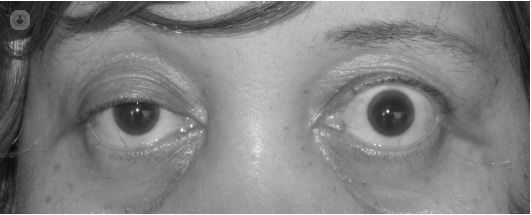



What is Ptosis?
Ptosis is a drooping of the upper eyelid. It is usually due to a problem in the muscle responsible for raising the eyelid (the levator muscle). The problem may be degenerative or congenital in nature.
There are different types of ptosis:
Aponeurotic ptosis – this is the most common variant and occurs because the tissue of the eyelid ages naturally and over time the levator muscle stretches, becoming looser, causing the eyelid to droop.
Neurogenic ptosis – characterized by the lack of nervous stimulation in the muscle. It usually occurs in children and is also called Marcus Gunn Syndrome.
Mechanical ptosis – occurs when there is a cyst or tumour in the upper eyelid.
Myogenic ptosis – the levator muscle does not perform well and prevents the eyelid from being in the optimal position.
What are the symptoms of ptosis?
Symptoms of ptosis include:
- Drooping of one or both upper eyelids, partially or totally covering the eye
- Reduction of visual field and interference in vision, in severe cases
- Need to tilt the head back or even lift the eyelid with your finger to see
Causes of ptosis
The drooping of the eyelid is due to a weakness of the levator palpebrae muscle, to damage to the nerves that control the eyelid or to the fact that the skin loosens in the upper eyelids. Ptosis can be congenital (the patient is born with it) or acquired. Acquired ptosis may be due to normal ageing, illness or injury.
Conditions that can cause ptosis include:
- A tumour around the eye
- Diabetes
- Horner's syndrome
- Myasthenia gravis
- Eyelid inflammation (stye)
Can ptosis be prevented?
Ptosis cannot be prevented but it can be diagnosed in the initial phases, being able to act before it affects the visual field and the unsightly effect is pronounced.
What is the treatment for ptosis?
Ptosis is usually treated surgically by a process called blepharoplasty. The aim of the surgery is to repair or tighten the muscle that lifts the eyelid. However, in some cases ptosis may not be severe enough to need treatment, while in cases caused by an underlying condition, successfully treating that condition may also resolve the ptosis.